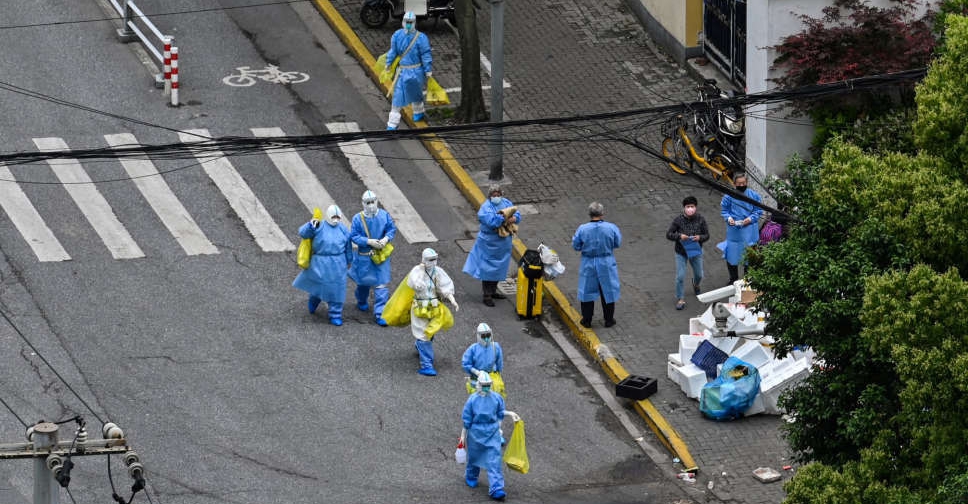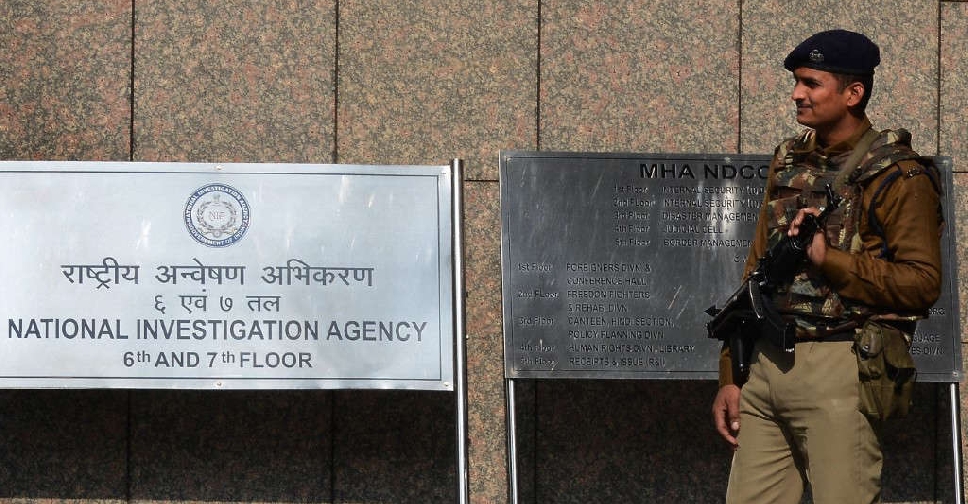
Shanghai authorities battling an outbreak of COVID-19 have erected mesh barriers outside some residential buildings, sparking fresh public outcry over a lockdown that has forced much of the city's 25 million people to stay home.
Images of white hazmat suit-clad workers sealing entrances of housing blocks and even closing off entire streets with roughly two metre-tall green fencing went viral on social media on Saturday, prompting questions and complaints from residents.
"This is so disrespectful of the rights of the people inside, using metal barriers to enclose them like domestic animals," said one user on social media platform Weibo.
One video showed residents shouting at workers setting up fencing from their balconies, who later relented and took them away. Other videos showed people trying to pull the fences down.
"Isn't this a fire hazard?" said another Weibo user.
Most of the barriers appeared to have been erected around compounds designated as "sealed areas", which are buildings where at least one person has tested positive for COVID-19 and so whose residents are forbidden from leaving their front doors.
It was not immediately clear what prompted authorities to resort to barriers, but a notice dated Saturday from one local authority shared online said it was imposing "hard quarantine" on some areas.
Reuters was not able to verify the authenticity of the photos, videos or notice.
The Shanghai government did not respond to a request for comment.
QUARANTINE
Shanghai, China's largest city and most important economic hub, is battling the country's biggest-ever COVID-19 outbreak with an elimination policy that seeks to test, trace and force all positive cases into central quarantine facilities.
The lockdown, which for many residents has lasted over three weeks, has fuelled frustration over access to food and medical care, lost wages, family separation, conditions in quarantine, and censorship of efforts to vent online.
It has also dragged on the world's second-largest economy, with factory production disrupted by snarled supply chains and difficulties faced by locked-down residents returning to work.
The city is carrying out daily citywide COVID-19 testing and accelerating transfers of positive cases to central isolation facilities to eradicate virus transmission outside quarantine areas.
In the past week, authorities have been transferring entire communities, including uninfected people, to isolation facilities outside Shanghai, saying they wanted to disinfect their homes, according to residents and social media posts.
The city reported 39 new COVID-19 deaths for April 23, versus 12 the previous day and by far the most during the current outbreak.
It did not report any deaths during the first few weeks, fuelling doubt among residents about the figures. It has since reported 87 fatalities, all in the past seven days.
Shanghai recorded 19,657 new locally transmitted asymptomatic cases, versus 20,634 a day earlier, and 1,401 symptomatic, versus 2,736.
Cases outside quarantined areas totalled 280 from 218 on the previous day. Other cities that have been under lockdown began easing restrictions once case numbers hit.
China largely succeeded in keeping COVID-19 at bay following the initial outbreak in Wuhan in late 2019, with a "dynamic zero" policy aimed at stamping out chains of infection.
That approach has been challenged by the spread of the highly infectious but less deadly Omicron variant, which has prompted cities to impose various levels of restrictions on movement.
Nationwide, China reported 20,285 new asymptomatic coronavirus cases for Saturday, versus 21,423 a day earlier, with 1,580 symptomatic cases, versus 2,988.
Beijing recorded 22 new COVID-19 cases - all locally transmitted - compared to six the day before, prompting a number of gyms and after-school activity providers to suspend in-person classes.




 2008 Mumbai attacks accused arrives in India after US extradition
2008 Mumbai attacks accused arrives in India after US extradition
 Hezbollah ready for talks with Lebanese government, MP says
Hezbollah ready for talks with Lebanese government, MP says
 Talks between US, Ukraine on minerals deal to start Friday
Talks between US, Ukraine on minerals deal to start Friday
 Dual national prisoners head home in US-Russia swap
Dual national prisoners head home in US-Russia swap



